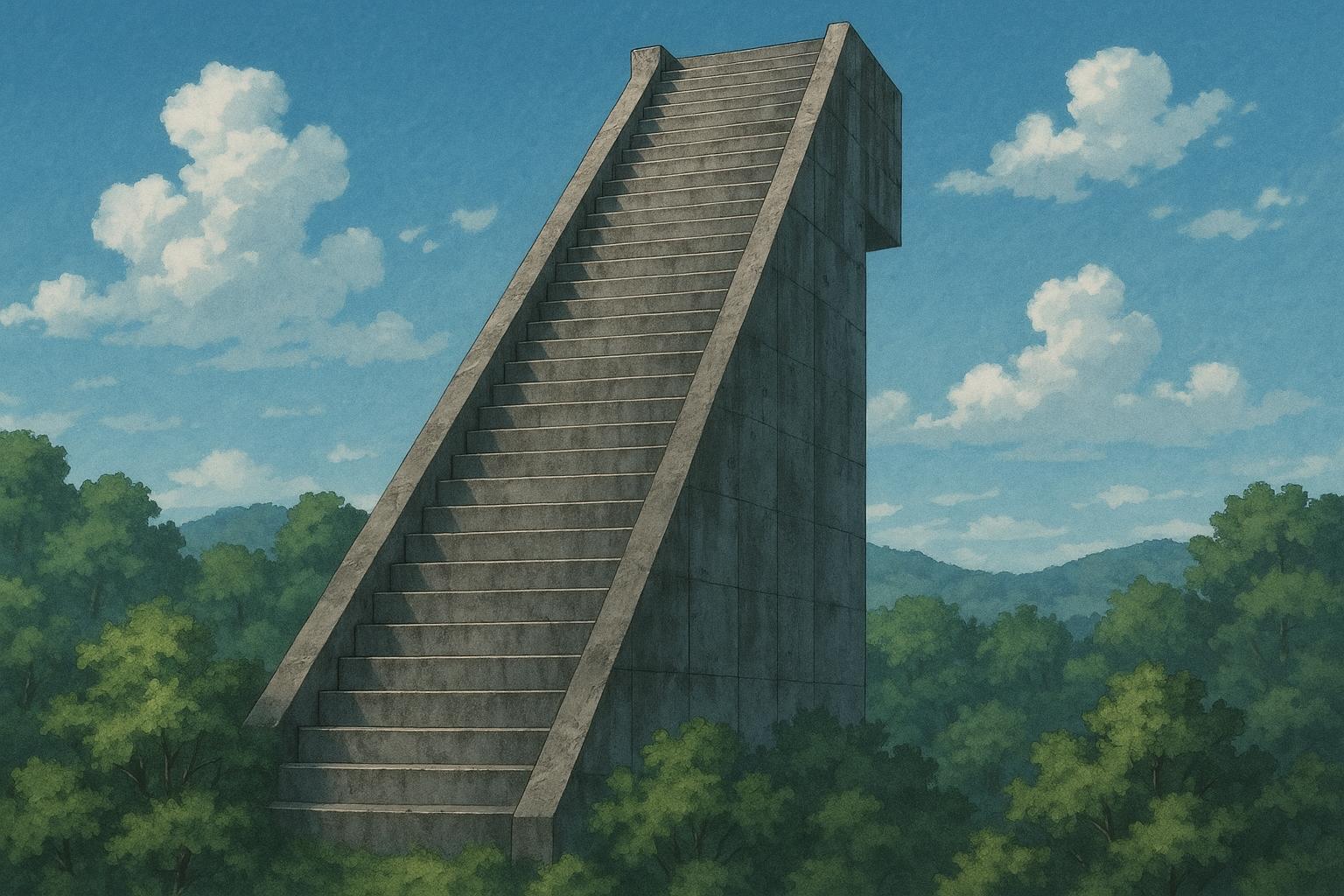In the verdant landscape of the Goodwood Estate in West Sussex, Rachel Whiteread's latest exhibition, marking the launch of the Goodwood Art Foundation, presents a striking fusion of urban decay and natural beauty. Dominating the scene is Down and Up, a colossal concrete cast of a staircase, emerging unexpectedly from the lush greenery like a remnant of the city’s grit encroaching on the English pastoral. As the artist’s distinctive approach to sculpture continues to challenge viewers, it elicits reflections on themes of mortality and memory in a setting that contrasts sharply with the brutalism of her work.
The exhibition’s rural backdrop—a forest filled with solemn trees—frames Whiteread’s creations, allowing an interplay between the weight of her art and the tranquillity of nature. Another prominent piece, Untitled (Pair), presents two bone-white slabs, evoking thoughts of death and loss. Cast from mortuary tables, their presence is somber and disquieting. This work resonates deeply, urging contemplation of life and its transience. Whiteread's previous monumental work, House, which garnered the Turner Prize in 1993, similarly reflected on themes of existence and absence, albeit engulfed by an urban setting. The demise of House, once a subject of cultural debate, stands as a poignant reminder of how art can evoke powerful emotions amid societal change.
The staircase featured in Down and Up traces its origins to a synagogue in Bethnal Green, reflecting Whiteread's fascination with everyday structures infused with history. Each step holds echoes of those who have passed, adding layers of emotional resonance to the piece. The starkness of the concrete contrasts with the vibrant colours found in a new series of photographs on display, where Whiteread’s acute observation of decay juxtaposes with nature's resilience. Scenes of abandoned spaces, notable in their melancholic beauty, disquiet yet fascinate; they capture a continuum between individual sorrow and collective grief.
Whiteread's recent works, including those produced during her 2023 exhibition in Bergamo, Italy—an area that suffered notably during the pandemic—continue to explore this interplay. Her tombstone-like sculptures serve as memorials for lost lives, further underscoring her commitment to highlighting how history and personal loss intertwine. By casting the forgotten spaces beneath chairs, those fragmentary impressions evoke warmth amid bleakness, revealing a familiar human experience.
In this latest exhibition, the notion of solitude resonates poignantly. Her sculpture Doppelgänger, a reconstruction of a dilapidated shack, resonates with themes of abandonment, reflecting the artist’s enduring fascination with the remnants of lives once lived. This sentiment continues in Detached II, another concrete representation nestled in the woods, its shuttered entrance and opaque windows serving as an invitation to ponder the isolation inherent in our existence. As the viewer navigates the space, a sense of loneliness extends beyond the physical barriers of the sculpture, compelling a deeper examination of the relationship between our surroundings and our emotional landscapes.
Whiteread’s work resonates with themes of decay—an acceptance that woven through life is an awareness of dissolution. The delicate balance she strikes between beauty and melancholy prompts us to reconsider our connections to both nature and urban environments. Her sculptures, though formidable and intrusive against the backdrop of the rural landscape, become conduits for meditation on time’s relentless passage, invoking a sense of place that is both unsettling and profound. As they stand as stark witnesses to the ebb and flow of existence, Whiteread’s poignant artistry reminds us that the echoes of the past shape our understanding of the present.
Reference Map:
- Paragraph 1 – [1]
- Paragraph 2 – [1]
- Paragraph 3 – [1]
- Paragraph 4 – [1]
- Paragraph 5 – [1]
- Paragraph 6 – [1]
Source: Noah Wire Services
